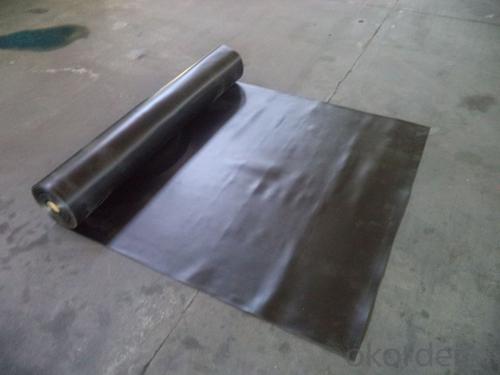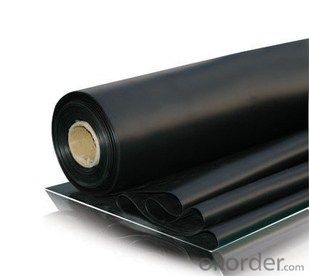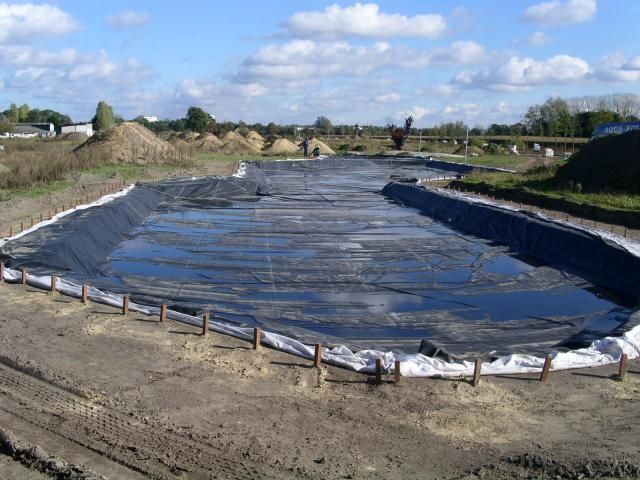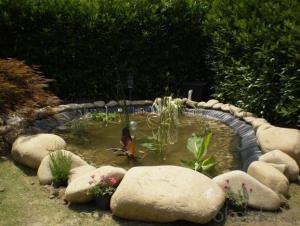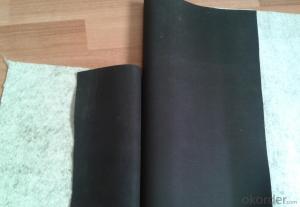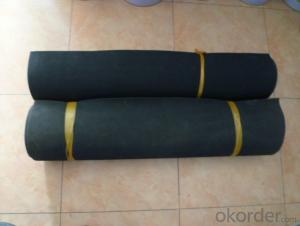EPDM Coiled Rubber Waterproof Membrane with Customized Thickness for Road
- Loading Port:
- Shanghai
- Payment Terms:
- TT OR LC
- Min Order Qty:
- 20000 m²
- Supply Capability:
- 5000000 m²/month
OKorder Service Pledge
OKorder Financial Service
You Might Also Like
EPDM Coiled Rubber Waterproof Membrane with Customized Thickness for Road
Description Of EPDM Coiled Rubber Waterproof Membrane with Customized Thickness for Road:
This waterproof coiled material is of high elasticity with best performance among high polumer
waterproof coiled material in the world.It is also the most typical one in the world.Waterproof coiled material made of ternary ethylene-propylene rubber is produced withthe use of the most advanced contiuous extrusion and vulcanization technology and related equipments which are specially designed for production of such product.It is good in compactness,without bubble and performance difference in length and breadth,perfomances reach or exceedthe demands of GB18173.1-2000 standard.
Main Features of EPDM Coiled Rubber Waterproof Membrane with Customized Thickness for Road:
A.Polyester based SBS Modified Bitumen Waterproofing Membrane
a. Strong impermeability
b. High tensile strength, elongation, ability to adapt the grassroots shrinkage deformation and cracking
c. Puncture-resistant, broken resistant, tear-resistant
d. The corrosion resistance, resistance to mildew, weathering good
e. Construction convenient, hot-melt can be operated Four Seasons Construction, reliable joints
B. Fiberglass based SBS Modified Bitumen Waterproofing Membrane
a. High tensile strength, stability of a good size
b. High Temperature good performance
c. Damage resistance, corrosion resistance, resistance to mildew, weathering good performance
d. Good construction performance, reliable joints.
Specifications of EPDM Coiled Rubber Waterproof Membrane with Customized Thickness for Road:
| Material | EPDM Rubber |
| Size | 1.2m (width)*20m (length) or customized, weldable type 2.05m or 4m width |
| Thick | 1.2mm, 1.5mm, 2.0mm |
| Type | Vulcanized & Weldable |
| Pattern | Non-reinforced (homogeneous) |
| Certificate | ISO9001/14001 |
Applications of EPDM Coiled Rubber Waterproof Membrane with Customized Thickness for Road:
1. Roofs, Basement, Toilet
2. Industrial and civil building waterproofing
3. Geo-synthetic liner for swimming pool, channels, irrigation system
4. Especially suit for projects with high requirements in durability, anti-corrosion and deformation
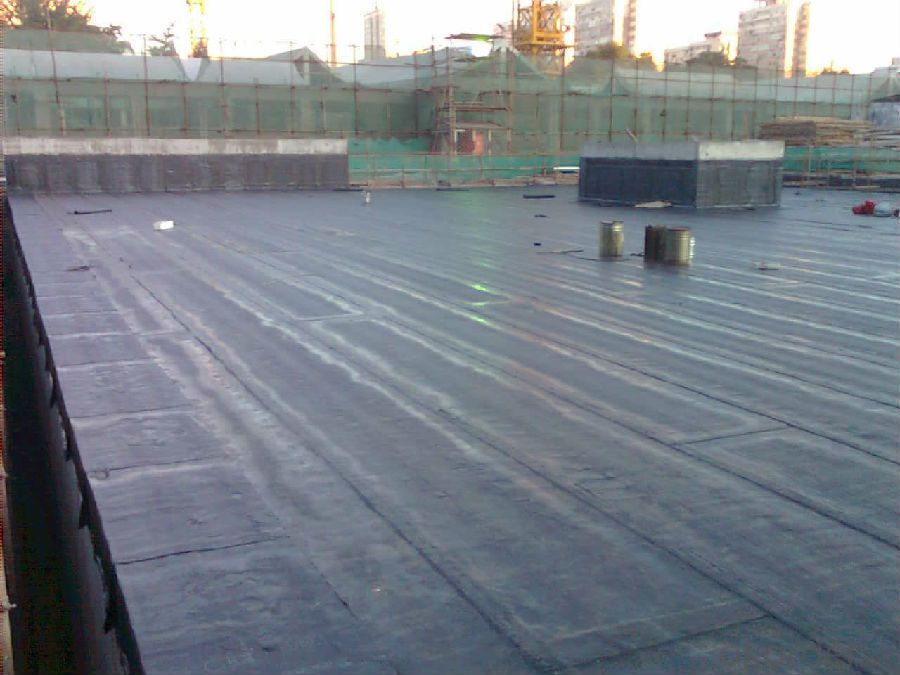
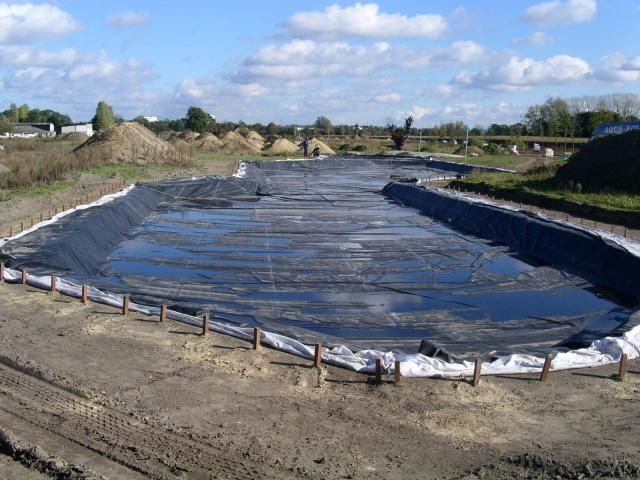

IMages of EPDM Coiled Rubber Waterproof Membrane with Customized Thickness for Road:
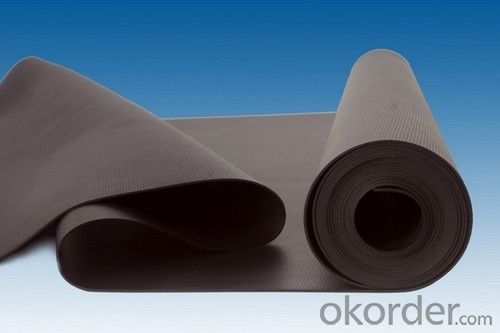
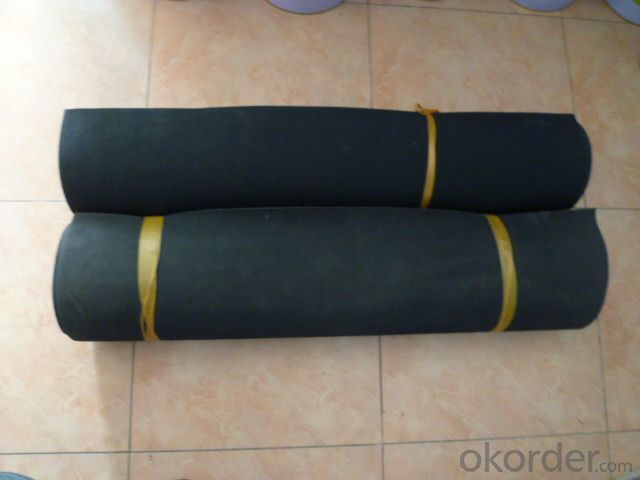


FAQ of EPDM Coiled Rubber Waterproof Membrane with Customized Thickness for Road:
1. What are we supplying?
We are specialized in producing Colorful Asphalt Roof Shingle, SBS/APP modified bitumen waterproof membrane, Self adhesive bitumen waterproof membrane, PVC waterproofing membrane, EPDM rubber roofing membrane, Single Component Polyurethane Waterproof Coating, and Spray Polyurea Waterproof Coating
.
2. How Many years experience do we have?
We have been exported to more than 20 countries in the past 15 years.
3. How long do we usually reply your request?
We always reply our customer within 24 hours.
- Q: Does a waterproofing membrane require any special considerations for installation in seismic zones?
- Yes, a waterproofing membrane does require special considerations for installation in seismic zones. Seismic zones are prone to earthquakes and ground movements, which can cause significant stress and strain on the building structure. When installing a waterproofing membrane in such areas, it is crucial to ensure that it can withstand the potential movements and vibrations caused by seismic activities. Some of the special considerations for installing a waterproofing membrane in seismic zones include: 1. Flexibility: The membrane should have sufficient flexibility to accommodate the movement of the building structure during an earthquake. It should be able to stretch, contract, and withstand dynamic forces without tearing or losing its waterproofing properties. 2. Compatibility: The waterproofing membrane should be compatible with the building materials and systems used in seismic zones. It is important to select a membrane that can bond well with the substrate and other construction components to create a seamless and robust waterproofing system. 3. Reinforcement: In high seismic areas, it is recommended to reinforce the waterproofing membrane with additional layers or reinforcements. This can be done by adding a fabric or mesh layer to enhance the membrane's tensile strength and resistance to tearing caused by seismic movements. 4. Proper installation techniques: The installation of the waterproofing membrane in seismic zones should follow specific guidelines and techniques to ensure its effectiveness. It may involve using specific adhesives, primers, or mechanical fastening systems to secure the membrane properly. 5. Quality control: Regular inspections and quality control measures should be implemented during and after the installation process. This helps to identify any potential issues or deficiencies in the waterproofing system, allowing for prompt repairs or adjustments to be made. By addressing these special considerations, the installation of a waterproofing membrane in seismic zones can help protect the building structure from water intrusion and potential damage caused by earthquakes. Consulting with experienced professionals and following industry standards and guidelines is crucial to ensure a successful installation in these challenging environments.
- Q: Can a waterproofing membrane be used for elevator shafts or equipment rooms?
- Yes, a waterproofing membrane can be used for elevator shafts or equipment rooms to prevent water infiltration and protect the structural integrity of the building.
- Q: Can a waterproofing membrane be used for a roof?
- Yes, a waterproofing membrane can be used for a roof. Waterproofing membranes are specifically designed to provide a barrier against water penetration, making them an ideal choice for protecting roofs from leaks and water damage. They are durable, flexible, and can be applied to various types of roofs, including flat and sloped surfaces.
- Q: What is a waterproofing membrane?
- To prevent the passage of water or moisture, one can apply a thin layer or sheet of material known as a waterproofing membrane onto a surface. This technique is widely utilized in construction, especially in areas where water infiltration is a concern, like roofs, basements, and bathrooms. By acting as a barrier, the membrane effectively stops water from seeping through and causing harm to the underlying structure. Enhancing its effectiveness, multiple layers of the membrane are typically applied, which can be composed of various materials such as rubber, bitumen, or synthetic polymers. In order to endure environmental factors like UV radiation and temperature fluctuations, these waterproofing membranes are meticulously designed to be flexible, durable, and resistant. By keeping buildings dry and safeguarding them from water-related problems such as leaks, mold, and deterioration, they play a crucial role in ensuring the longevity and integrity of structures.
- Q: Are waterproofing membranes resistant to thermal cycling?
- Yes, waterproofing membranes are generally resistant to thermal cycling. These membranes are designed to handle the expansion and contraction that occurs due to temperature fluctuations, making them ideal for protecting structures from water damage caused by thermal stress.
- Q: Are waterproofing membranes suitable for historical buildings?
- Under certain circumstances, historical buildings can benefit from the use of waterproofing membranes. These membranes are specifically designed to safeguard structures against water damage, which is especially important for historical buildings that may have aged and porous materials. However, the suitability of waterproofing membranes for historical buildings relies on a variety of factors. First and foremost, it is vital to take into account the unique requirements and characteristics of the historical building in question. Each building possesses distinct materials and features, and the impact of waterproofing on these elements must be thoroughly assessed. Some older structures may possess delicate architectural elements or materials that could be adversely influenced by the application of waterproofing membranes. In such instances, alternative methods that are less intrusive or damaging may be more appropriate. Secondly, it is essential to seek guidance from conservation experts or professionals who specialize in the preservation of historical buildings. These experts can evaluate the specific needs of the building and offer advice on the most suitable waterproofing techniques. They can also ensure that any interventions are executed in a manner that respects the historical integrity and authenticity of the structure. Lastly, it is crucial to consider the long-term consequences of waterproofing membranes on historical buildings. While these membranes can effectively protect against water damage, they may also compromise the natural breathability of the building, potentially leading to moisture accumulation and further deterioration. Therefore, it is imperative to carefully balance the benefits of waterproofing with the potential risks and long-term effects. In conclusion, while waterproofing membranes can be appropriate for historical buildings, caution should be exercised when applying them. A thorough assessment of the building's specific requirements, consultation with preservation experts, and consideration of long-term implications are essential in determining the suitability of waterproofing membranes for historical structures.
- Q: Can a waterproofing membrane be used on asphalt roofs?
- Indeed, it is a widely accepted practice to utilize a waterproofing membrane on asphalt roofs. This practice effectively bolsters their longevity and safeguards them against water-related harm. Typically composed of synthetic materials like modified bitumen or EPDM, the membrane forms an impermeable barrier, thwarting water infiltration. This fortification effectively prevents leaks and extends the lifespan of the asphalt roof. Furthermore, the waterproofing membrane can offer supplementary insulation and enhance energy efficiency within the structure. However, it is crucial to ensure that the chosen waterproofing membrane is compatible with asphalt and adheres to industry standards of performance and durability. It is highly recommended to consult with a professional roofing contractor or manufacturer to determine the most suitable waterproofing membrane for asphalt roofs.
- Q: Can a waterproofing membrane be used in ponds or reservoirs?
- Yes, a waterproofing membrane can be used in ponds or reservoirs. These membranes are specifically designed to provide a barrier against water, preventing leaks and seepage. They are commonly used in various water containment applications, including ponds, reservoirs, and other water storage structures. Waterproofing membranes are typically made of durable materials such as rubber, PVC, or HDPE (high-density polyethylene). They are resistant to UV radiation, chemicals, and other environmental factors that can degrade the integrity of the membrane. This ensures long-lasting protection and prevents water from seeping through the structure. The installation of a waterproofing membrane in a pond or reservoir involves careful preparation of the surface, followed by the application of the membrane using appropriate adhesives or welding techniques. The membrane is typically applied to the entire surface area, including the walls and the base of the structure, to ensure complete water tightness. Using a waterproofing membrane in ponds or reservoirs offers several advantages. It helps to maintain the water level by preventing evaporation and leakage. This is especially important in arid regions where water scarcity is a concern. Additionally, it helps to protect the surrounding soil from water contamination and prevents the loss of valuable water resources. However, it is important to note that the selection of the appropriate waterproofing membrane should be based on the specific requirements of the pond or reservoir. Factors such as the size of the structure, the type of water it will contain, and the environmental conditions should be considered when choosing the right membrane. In conclusion, a waterproofing membrane can indeed be used in ponds or reservoirs to provide a reliable and long-lasting solution for water containment and prevention of leaks. With proper installation and maintenance, it can ensure the integrity and sustainability of the water storage structure.
- Q: Are waterproofing membranes resistant to frost damage?
- Yes, waterproofing membranes are generally resistant to frost damage. Waterproofing membranes are designed to be durable and able to withstand various weather conditions, including freezing temperatures. They are typically made from materials such as modified bitumen, PVC, EPDM, or TPO, which have excellent resistance to frost and other environmental factors. These materials are engineered to remain flexible and elastic even in cold temperatures, ensuring that the waterproofing membrane remains intact and effective in preventing water penetration. Additionally, proper installation techniques and maintenance can further enhance the resistance of waterproofing membranes to frost damage.
- Q: Are waterproofing membranes suitable for residential applications?
- Indeed, residential applications can benefit greatly from the use of waterproofing membranes. These membranes find widespread use in a variety of residential construction areas, including basements, foundations, roofs, bathrooms, and balconies. Their primary purpose is to safeguard the building structure by preventing water penetration and moisture damage. Waterproofing membranes function as a barrier that effectively blocks water from infiltrating the structure, thereby averting problems such as mold growth, rot, or structural deterioration. These membranes commonly consist of materials such as bitumen, PVC, EPDM, or polyurethane, which possess exceptional water-repelling properties. During the construction or renovation process of residential buildings, waterproofing membranes are typically installed. They can be applied in the form of liquid coatings or sheets that are meticulously laid down and firmly affixed to the surface. These membranes create a seamless and long-lasting barrier that can withstand the test of time. Moreover, waterproofing membranes offer numerous advantages for residential applications. They help maintain a dry and comfortable living environment by preventing water leaks and dampness. As a result, they safeguard the integrity of the building materials, extend the lifespan of the structure, and minimize the likelihood of expensive repairs. Furthermore, these membranes contribute to enhanced energy efficiency by reducing heat loss or gain caused by moisture infiltration. By effectively blocking water, they assist in maintaining consistent temperatures inside the house, which leads to reduced energy consumption and lower utility bills. In conclusion, waterproofing membranes are an exceptional choice for residential applications. They provide dependable protection against water damage, enhance the longevity of the structure, and contribute to a healthier and more energy-efficient living environment.
Send your message to us
EPDM Coiled Rubber Waterproof Membrane with Customized Thickness for Road
- Loading Port:
- Shanghai
- Payment Terms:
- TT OR LC
- Min Order Qty:
- 20000 m²
- Supply Capability:
- 5000000 m²/month
OKorder Service Pledge
OKorder Financial Service
Similar products
Hot products
Hot Searches
Related keywords






